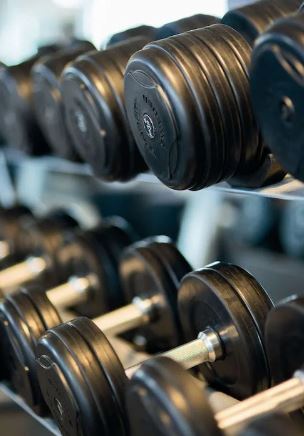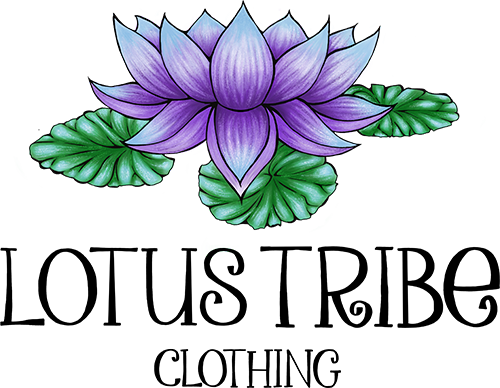What does it mean to be physically fit and well? Is it looking fit and having chiseled abs or broad shoulders or round booties? These are often the images that spring to mind when we think of fit people, but are these physical attributes actually the mark of peak physical wellness?
Although people with great levels of fitness often do exhibit these traits to varying degrees, they are not what make someone 'fit' in and of themselves. If it did, all of our best athletes would look like bodybuilders and this simply isn't the case.
If looking fit isn't actually being fit, what is fitness? Physical fitness can be defined as a state of good overall health and wellness, where we can perform daily acts of living, work, sports and recreation without becoming injured or overly fatigued. Notice, there is nothing in there about beauty or athleticism. It's essentially being able to move, live and feel well. Unfortunately, the modern lifestyle caters to a life of excess and sitting. Many people no longer have this level of health and wellness, some never knew it in the first place.
So, what does it take to achieve physical fitness and wellness and what are their different elements? Well, it comes down to fueling your body with nutritious foods, so that you can train your body, then actually training your body, followed by letting your body rest and recover.
Fueling Your Body
Your car won't go anywhere without fuel and neither will your body, everything needs energy to move. Make sure to get both adequate fuel and nutrition. This can be done by getting enough:
- Calories: The amount of energy provided by the foods that we consume.
- Macronutrients: Macronutrients are carbohydrates, fats and proteins. They each play diverse roles within the body, but in terms of fuel for movement, fats and carbohydrates provide energy for movement and proteins provide the building blocks for maintenance and repair of tissues.
- Micronutrients: Micronutrients are vitamins and minerals. They also play numerous roles within the body, but many are vital for muscle contractions themselves (ie movement) and aid in the healing process of tissues that are broken down during exercise.
- Water: Water is vital to nearly all aspects of life, it is especially important for exercise. In relation to fitness and movement, water provides the hydration we need to keep cool and stay in motion.

All of these things are needed to feel and move well. Meeting these needs are best done through eating nutrient dense, whole foods and drinking plenty of water. Check out our nutrition blogs within our wellness section for more on these topics.
Training Your Body
We train our bodies through movement, and just like nutrition, it is best to get your movement from a diversity of sources for the best results and overall wellness. The main types of movement and fitness are cardiovascular fitness, flexibility/mobility training and muscular strength/endurance.
- Cardiovascular Fitness is how well your cardiovascular (heart, etc.) and respiratory systems (lungs, etc.) work. These two systems work in tandem to transport oxygen and nutrients all over your body and are imperative for everything from partaking in exercise, to managing arousal levels/stress and healing. Cardiovascular fitness can be trained through exercises that have been dubbed 'cardio.' It is typically done for longer durations, with little resistance or intensity. Although, there are some forms of higher intensity cardiovascular fitness (HIIT, V02 max training, lactate threshold training, etc.), they utilizes different energy pathways and are usually done for performance reasons, rather than general cardiovascular health and wellness.
- Flexibility and Mobility are related concepts. Flexibility refers to the ability to lengthen our muscles passively. Mobility is the ability to actively move our muscles and joints through their ranges of motion without pain. So, flexibility is the ability to stretch and mobility is what you can do with that flexibility. Flexibility and mobility training are often done through things like yoga, myofascial release, stretching, some forms of massage and joint specific training.
- Muscular Strength and Endurance are similarly related concepts and are typically trained through a type of exercise called resistance training. Muscular strength is how much force your muscles can exert and muscular endurance is your muscles ability to work for an extended period of time, without stopping or becoming overly fatigued or injured. So, muscular endurance is a bit like cardio for your muscles. As such, it is typically trained by preforming less intense (often through less load or weight) exercises for longer durations or more repetitions. Muscular strength is the other end of the spectrum and is trained by performing higher intensity exercise (often through higher loads and weight) for shorter durations or less repetitions.

We will cover the specifics of different ways to train your body in future blogs.
Letting Your Body Rest And Recovery
Rest and recovery are vital aspects of physical fitness. So often, people are worried about over training, which can happen, but it is not very common in the general population. Much more common is under resting and dedicating little to no time to recovery. Rest is pretty straightforward, it is not engaging in strenuous activity. Rest is passive and often comes from relaxing activities or sleeping. Recovery on the other hand is more active. Recovery could be anything from getting adequate post movement nutrition, to light exercises and gentle forms of yoga that aid in the healing process, to things like ice baths, myofascial release and massage. Really, recovery is anything that aids in the repair and maintenance of your body.

Final Thoughts, Putting It All Together
Physical Fitness, the ability to perform your daily acts of living, work, sport and recreation with ease and without excess fatigue or injury. There are many elements of physical fitness, each with their own merit and health benefits. Some aid the health of bones, others the muscles themselves and the ability to do things like go for a hike or climb steep stairs, and others help combat stress and mental trepidation. Truthfully, the health benefits of movement and fitness are nearly endless; almost like your body evolved to move. It can seem a tad complicated and perhaps even overwhelming, but really, the key is to live an active lifestyle, rich in movement.
You need nutritious fuel, so that your body can move and you need to actually move (and move often), so that your body can become stronger and stay strong. In respect to movement and the ability to continue to do so as we age and mature, the old adage, "If you don't use it, you lose it," is very true. The last, and most underappreciated aspects of physical wellness, are rest and recovery. Make sure to refill your body, drink plenty of water, get lots of sleep and maybe even get a massage or invest in a foam roller. In short, eat well, train often, rest and relax.

*This blog is created and published online for informational purposes only. It is not intended to be a substitute for professional medical advice and should not be relied on as health or personal advice. Always seek the guidance of your doctor or other qualified health professional with any questions you may have regarding your health or a medical condition.

